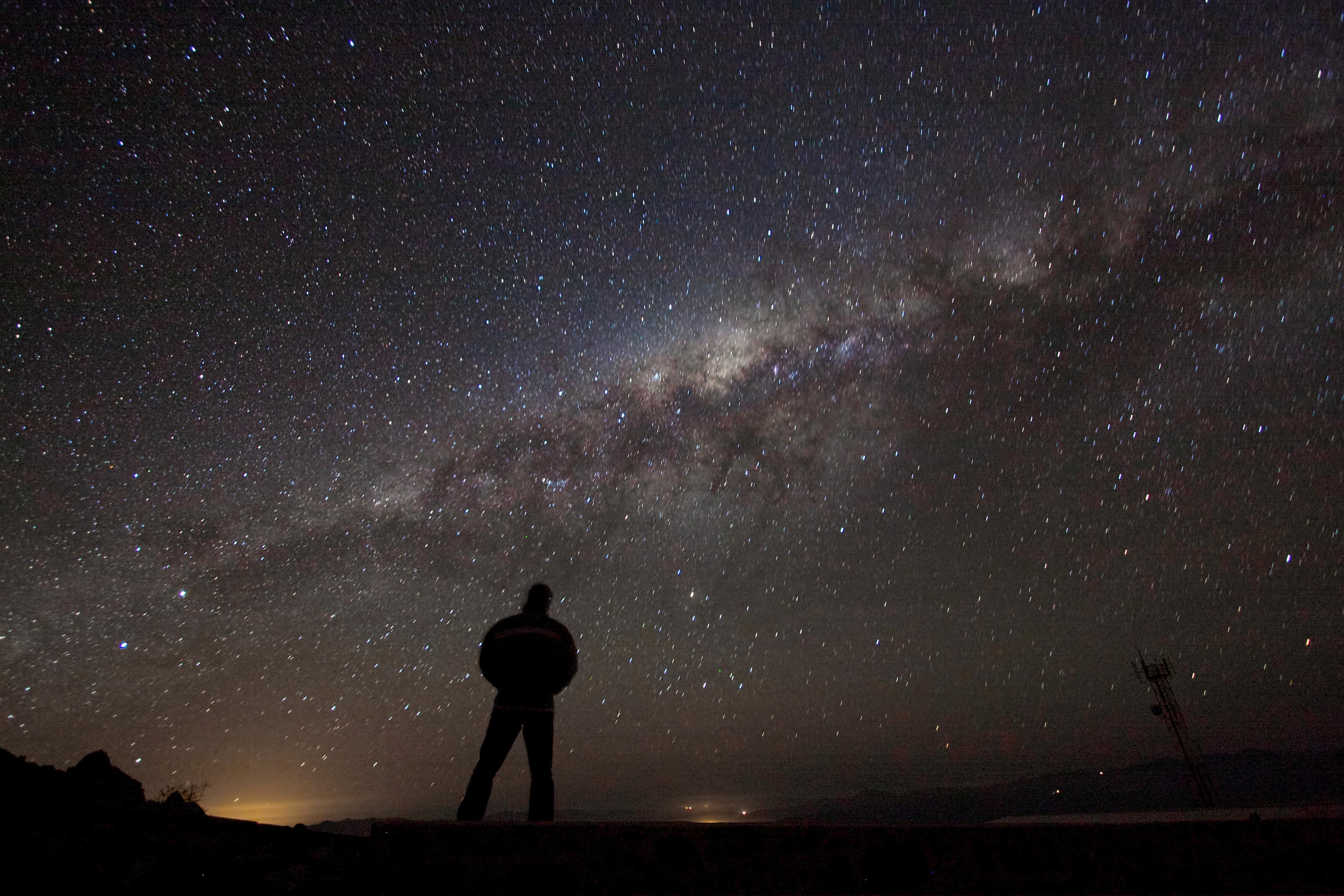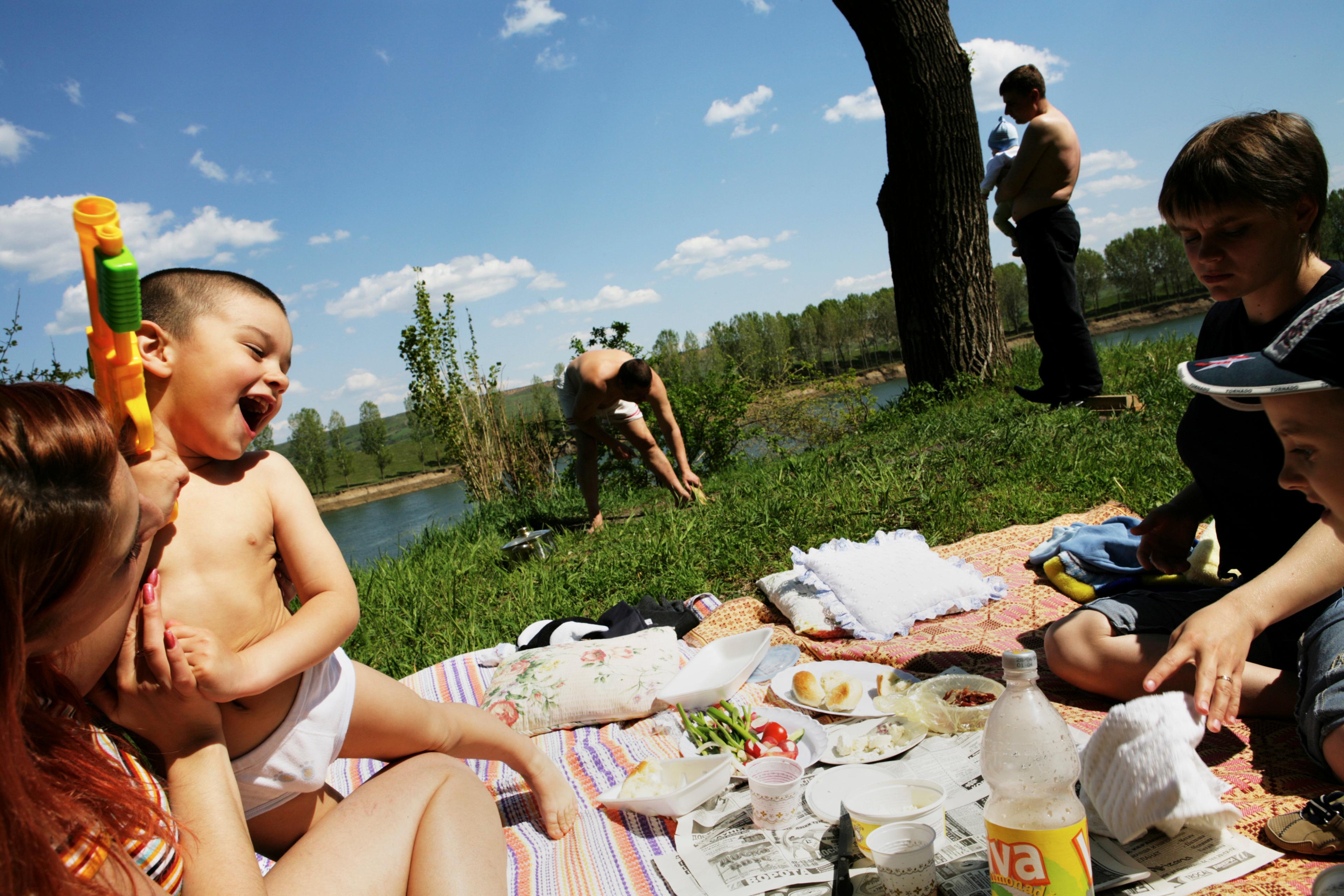It’s winter on a high pass in the mountains of Colorado. At almost 3,350 metres (11,000 feet), Molas Pass looks out over meadows and fir trees that spread up toward the rocky peaks of the San Juan range. But on this winter’s day, the landscape was buried under a sea of white, with radiant blue skies above. The temperature: -18 degrees Celsius (0ºF). And it was warm. A winter coat was stifling; shirtsleeves were enough while standing in the sun.
Numbers can be tricky. For instance, human intelligence can’t really be encapsulated by a single number, though IQ remains a useful shorthand for a wider set of abilities. Temperature is the same way. By and large it works fine: 30ºC (86ºF) is hot, 7ºC (45ºF) is cold. But in Chicago, 7ºC is bitter, while in the sunshine of Wyoming you might not need a jacket. During summer in New Orleans, 30ºC at 10am is stifling, but 30ºC on a late winter’s afternoon in Tucson, Arizona is a caress. This is why weather reports supplement their accounts of temperature with other numbers, such as heat index and wind chill.
But none of these accounts capture the experience of temperature that’s in our future.
Our sense of warmth or its absence comes from a mix of factors: temperature, of course, but also humidity, wind, time of the year, cloud cover, altitude, clothes, and mood. Each of these elements stretches the meaning of a single number. All together, they make for an eclectic set of experiences that may have little relationship to the official temperature. No wonder the Greek philosopher Protagoras, when he sought a metaphor for subjective experience, claimed that, when the same wind blows, ‘one of us feels cold, and the other does not’.
What’s more intuitive than the experience of temperature? Yet it’s hard to accurately communicate this experience to others. In an era of climate change, these difficulties grow in importance. In what follows, a physicist and a philosopher try to do justice to the range of experiences that make up temperature. Our conclusion is disquieting: we are becoming aliens on our home planet.
Begin with a basic distinction: between the experience of warmth versus the numbers we put on that experience. The feeling of temperature, like all our experiences, is numberless – human experience is qualitative in nature. Sure, we can measure and count things, but we don’t experience numbers as we do sights and sounds. The numbers we assign to things are a way of checking our impressions against an external standard. These numbers always run behind our experience.
In other words, the numbers we assign to temperature are metaphors. A metaphor is a figure of speech that we apply to an action or object that’s not literally true. Just as there is no 100 of IQ (the average) hovering inside someone’s head, there is no 30 of temperature floating in the air. Numbers are a translation of our sensations into a numerical scale.
The same thing occurs when we talk to a nurse about our pain. We’re asked to describe the feeling on a scale of 1 to 10 – with the numbers matched to cartoon faces on a piece of paper showing progressively more painful grimaces. This helps us to communicate, but the numbers (or faces) can’t capture the distinctive dull, piercing or throbbing quality of our pain. The numbers are metaphors. Similarly, measuring temperature is one thing, while the experience of temperature as ‘sticky’ or ‘bone chilling’ is something else.
None of this is to deny the fact that it is the physics of temperature that drives our personal experience. It’s just that temperature needs to be thought of across three registers: the physical phenomenon of heat, our embodied experience, and the numbers we put on that experience.
As a matter of physics, temperature is a measure of the energy of molecules in motion – the velocity of gas or liquid molecules, or the jiggling of bound molecules in solids. When we touch an object that feels warm, the molecules in our hand are jiggling at lower speeds than those of the object. The faster molecules of the object slam into the slower ones of our hand, adding heat energy, speeding them up, and causing the experience of warmth.
Temperature can be measured in different ways. The Celsius scale calibrates temperature to the properties of water, identifying freezing as 0°C and boiling (at sea level) as 100°C. It’s the scale used by most of the world. The scale was invented by Anders Celsius, an 18th-century Swedish astronomer. He originally defined 0°C as boiling and 100°C as freezing, but the scale was reversed after his death. The Fahrenheit scale is used today only in the United States, Belize, Liberia, and a number of Pacific and Caribbean islands, including Palau and the Caymans. Daniel Fahrenheit was an 18th-century Dutch physicist who devised a scale that didn’t need negative numbers to describe the human experience of temperature, setting the freezing point of water to 30°F and normal body temperature to 96°F.
Today, the Celsius scale is the scientific standard, and the Fahrenheit scale is viewed as antiquated. But the two scales are equally able to represent scientific data. In some ways, Fahrenheit better connects to our lived experience because it’s more fine grained and better able to represent the differences in temperature that we’re able to discern. Granted, there’s a certain logical cleanliness to Celsius, with its scale based on 100 units between the freezing and boiling of water – the scale is also rooted in our experience, in the fact that 100 is a multiple of the number of our fingers and toes.
But neither scale captures our embodied experience any better than the pain diagram does. To understand this point takes us to the experience of humidity.
When thinking about temperature, keep in mind what we’re (not) measuring. That day at Molas Pass points up the difference between air temperature (what thermometers measure) and the radiative temperature from the Sun (what our skin feels). The difference comes from the fact that air is transparent to the wavelengths of energy coming in from the Sun. The atmosphere heats up only after that solar energy is absorbed by matter (rocks, soil, water, our bodies) and is then re-radiated at the longer wavelengths that air molecules can absorb (the greenhouse effect).
Anders Celsius had a point: water is the most important variable for understanding how we experience temperature. In part, this reflects the fact that we are mostly water. Around 60 per cent of an adult’s body consists of water – the brain is three-quarters water, skin is two-thirds water, and even our bones are one-third water.
Water is how we regulate our body temperature. We do so through sweating, although its effectiveness varies with humidity. Humidity is a measure of the amount of water vapour in the atmosphere. We speak of ‘relative humidity’ because the amount of water vapour the atmosphere can hold depends on the temperature of the air. The warmer the air, the more moisture it can hold.
It’s the evaporation of water off our skin that cools us, not the sweating. The ease with which sweat evaporates is determined by the relative humidity of the air, not by the amount of water on our skin. At low relative humidity, sweat quickly evaporates. At high relative humidity, sweat hangs on the skin, resulting in that sticky, uncomfortable feeling we know so well.
We’re all familiar with humidity. But humidity is about to become a whole new type of experience – not just a matter of discomfort, but also something deadly.
This is where our adding carbon dioxide (CO2) to the atmosphere becomes relevant.
The amount of CO2 in our atmosphere is actually quite small: nitrogen and oxygen make up 99 per cent of the atmosphere, and argon and other gases another 0.9 per cent. But a little bit of CO2 goes a long way. There are currently 418 parts per million (ppm) of CO2 molecules in our atmosphere – that is, just four 1,000ths of what we breathe. Nonetheless, this is 50 per cent higher than pre-industrial levels; in 1800, atmospheric CO2 stood at 280 ppm.
The last time CO2 levels were this high was 5 million years ago, at the end of the Miocene epoch. CO2 was then between 400 and 500 ppm, creating a world quite different from the one we inhabit – with no ice at the poles and global sea levels 50 to 100 feet higher than today. Bring back these sea levels and half of Florida disappears. So do our coastal cities: London, New York, Cairo and Venice. Each would become a new version of the Lost City of Atlantis – unless hidden behind a seawall.
If Miocene Earth had the same amount of CO2 in the atmosphere as we have currently, why aren’t we living in the same conditions? It’s a matter of time lags: there’s a delay as the climate equilibrates with the amount of CO2 in the atmosphere. The planet will eventually catch up. A Miocene climate is coming. It’s like seeing the flash of a far-off explosion, but the shockwave hasn’t yet reached us.
This raises issues more pressing than simply a disrupted climate and the flooding of coastal cities. This becomes a matter of basic human survival.
We didn’t evolve in the Miocene. Humans are a species of the past 2.5 million years, an era known as the Pleistocene. In comparison with most of geologic history, this era was a time of massive icesheets and cold temperatures. Our bodies’ heat regulation evolved for these cold conditions.
Our thermal limits are commonly expressed in terms of something called ‘wet-bulb temperature’. This is a combined measure of temperature and humidity. Take a thermometer and record its temperature. Then wrap the thermometer in a wet cloth. If the relative humidity is less than 100 per cent, the water in the cloth will evaporate, cooling the thermometer, just as evaporating sweat cools us. It takes energy for the liquid water on the bulb to become water vapour, energy that is drained from the thermometer.
Our normal body temperature is 37°C (98.6°F). If the wet-bulb temperature (where the thermometer can’t be cooled because water won’t evaporate) reaches 33°C, we are no longer able to cool ourselves, and the human body shifts from dissipating heat to absorbing heat. This is when humans start to die. It’s estimated that during the 2003 European heatwave, 70,000 people died from that summer’s heat.
Climate scientists believe that, by the end of the century, large sections of the tropics and subtropics will be affected. Much of these areas have no air conditioning, nor can afford it (which, in any case, would further heat the planet). Pressures to migrate will become immense, as formerly liveable spaces become uninhabitable.
After all the numbers and the physics, understanding temperature comes down to the nature of our flesh. Humans evolved within the icy times of the Pleistocene. That world is disappearing. We may huddle against the cold, but our bodies, layered in fat and fur, evolved within the Pleistocene ice. The liveable temperatures of the past few millennia will soon be a thing of the past.
We’re living at the intersection of two temporal regimes. One is the temperature range of common human experience – the time of weeks, months, and years; the rhythms of the seasons, the next economic quarter, and the next election. But we are about to be introduced to temperatures from another geologic era. This time, as yet only dimly perceived, will reveal a vastly different planet, with temperatures that will be difficult or impossible to endure.
Temperature, then, is not only a matter of objective conditions. It’s also a matter of our flesh. As the science fiction author Kim Stanley Robinson notes in The Ministry for the Future (2020), the climate crisis will be something we will bear in our bodies. We may think we like warm weather, but we are creatures of the ice. And the ice is melting.








